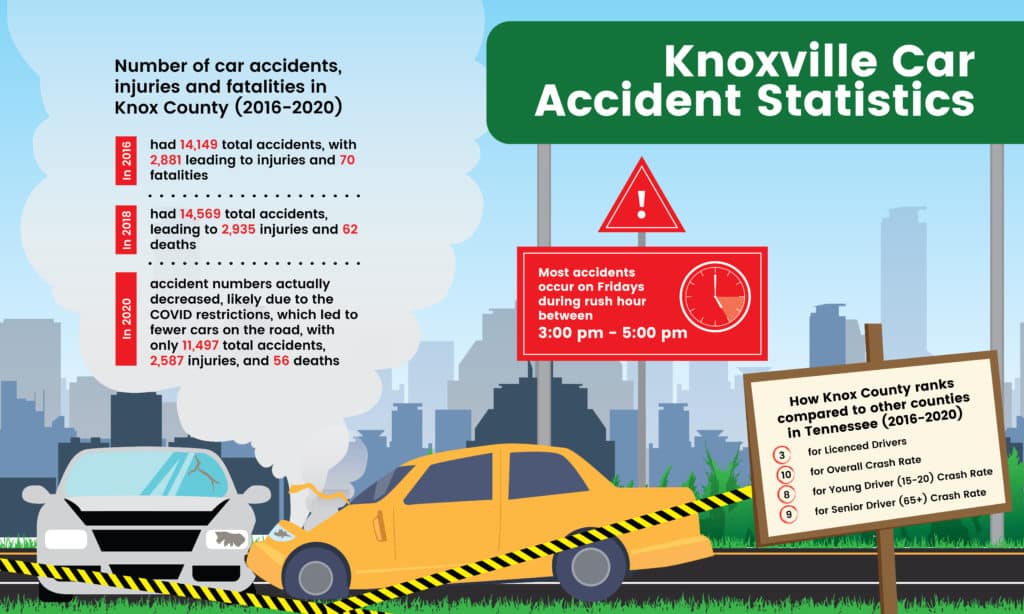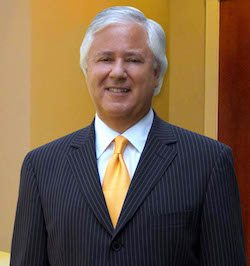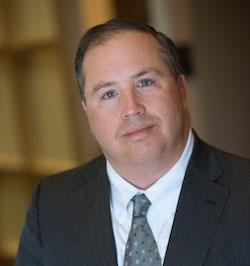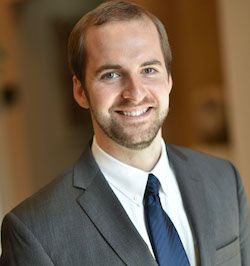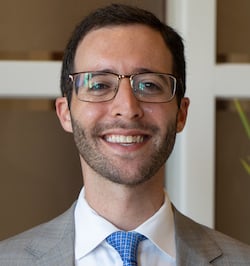
Knoxville, TN
Car
Accident Lawyer




Mr. Trotz was recognized from 2019-2024 as a Super Lawyers Mid-South Rising Star. Mr. Trotz is also a member of the Young Lawyers Division of the Memphis Bar Association, Memphis Bar Association, Tennessee Bar Association, and the Tennessee Trial Lawyers Association where he serves on the Executive Committee. READ OUR EDITORIAL GUIDELINES
Mr. Trotz was recognized from 2019-2023 as a Super Lawyers Mid-South Rising Star. Mr. Trotz is also a member of the Young Lawyers Division of the Memphis Bar Association, Memphis Bar Association, Tennessee Bar Association, and the Tennessee Trial Lawyers Association where he serves on the Executive Committee. READ OUR EDITORIAL GUIDELINES
Those who suffer serious injuries in a car accident might face a lifetime of medical treatment, physical and mental therapy, and medication. However, if you have been hurt in a crash, you don’t have to face the recovery process alone. The experienced legal team at NST Law is here to help.
Contact our Knoxville car accident lawyers at (865) 684-1000 or fill out our online form for your free consultation to learn more about your legal options and how we can help.
Those who suffer serious injuries in a car accident might face a lifetime of medical treatment, physical and mental therapy, and medication. However, if you have been hurt in a crash, you don’t have to face the recovery process alone. The experienced legal team at NST Law is here to help.
Table Of Contents
- Our Car Accident Attorneys in Knoxville Will Fight For You
- How Much is My Knoxville Car Accident Claim Worth?
- Can I File A Claim If I was Partially At Fault For The Crash?
- Most Dangerous Roads in Knoxville
- How to Prove Your Knoxville Car Accident Claim
- Knoxville Car Accident Statistics
- Top Causes of Knoxville Car Crashes
- Steps to Take After a Knoxville Car Accident
- Contact Our Experienced Car Accident Attorneys in Knoxville
Our Car Accident Attorneys in Knoxville Will Fight For You
When you work with the experienced Knoxville personal injury lawyers from NST Law, we will handle every step of your claim. You don’t have to worry about gathering documentation, talking to the insurance company, or accepting an inadequate settlement. We’re The Champions For The Injured, and we will handle your case so you can focus on what’s most important—your health and recovery.
The team at our Knoxville injury law office has more than 33 years of experience helping accident victims like you. As we build your case, we use our Six Pillar approach to ensure you get a personalized strategy, transparent communication, easy access to your legal team, and a group of resourceful attorneys and staff working to get you the maximum compensation possible.
Our Settlements & Verdicts
Our attorneys and staff have worked hard to recover over $2 billion in car accident settlements and verdicts for our clients. We’ve helped secure successful outcomes, including:
- $6.3 million for a multi-vehicle fatality accident
- $3 million for a couple with catastrophic injuries after a crash
- $1.4 million for the victims of a head-on collision
See What our Knoxville Clients Are Saying
Here are a few testimonials from the clients of our Knoxville car accident law firm:
Working with Ryan was very pleasant and he did everything to get things right on my end. Couldn’t have asked for a better experience.
– Jayce D.
They were very helpful, I was in a car accident while I was pregnant and not at fault I’m so glad I chose NST
– Marecia H.
They settled my accident case quickly and efficiently and I got way more in compensation than I expected. Fantastic law firm! Cares about their clients and goes above and beyond to make sure they’re happy. 10/10 100% recommend
– Ashley B.
I’m so very grateful for the help of this law firm. Ms. Jasmine, Ms. Jaterica, Ms. Amy and Mr. Dan Weathers were all very caring, compassionate and professional in every conversation I had with them. I HIGHLY recommend this law firm to anyone.
– Tammy S.
How Much is My Knoxville Car Accident Claim Worth?
Your compensatory damages can be economic or noneconomic. Economic damages include all of the ways your injuries affected your finances. Economic damages include:
- Medical bills
- Lost wages due to missed work
- Diminished earning capacity due to disabilities
- Cost of replacement services, like childcare, that you cannot perform
Non-economic damages cover all of the ways your injuries diminish your quality of life. Examples of non-economic damages include:
- Physical pain
- Mental suffering
- Inconvenience
- Inability to engage in activities
- Loss of enjoyment of life
Non-economic damages depend on the severity and duration of your injuries. More severe injuries and longer-lasting injuries will usually result in larger noneconomic damages.
Tennessee law states that punitive or exemplary damages — damages meant to punish the defendant and deter similar misconduct — can’t exceed double the amount of compensatory damages awarded or $500,000.
Related: What Is My Case Worth?
Can I File A Claim If I was Partially At Fault For The Crash?
Tennessee uses a fault-based car insurance system. Therefore, everyone injured in a car accident can file claims against the at-fault driver’s insurance policy.
Additionally, Tennessee allows you to recover compensation as long as you are not found to be 50% or more responsible for causing the crash.
Most Dangerous Roads in Knoxville
The Knoxville Regional Transportation Planning Organization (TPO) analyzes data to determine where infrastructure investments might make locals safer.
The major roads identified by the TPO include:
How to Prove Your Knoxville Car Accident Claim
Negligence happens when someone does something that they knew or should have known could result in harm to you. The key difference between intentional actions and negligent actions is what you have to prove about the other driver’s mindset.
For intentional actions, you must prove the other driver’s intent to commit the act that caused the crash. For negligent actions, you only need to prove that the other driver should have known not to do whatever caused the crash.
To prove negligence, you must establish the following four elements.
Duty
Drivers have a legal duty to other travelers to drive in a reasonably prudent manner. As a result of this legal duty, every driver must exercise reasonable care while driving.
Breach
Drivers breach the duty of reasonable care when they do something that is objectively unreasonable. In many cases, this breach arises from a traffic violation.
Causation
In Tennessee, causation has two parts. Cause-in-fact means that the breach fell within the chain of events that resulted in your injury. Proximate cause means that the breach was something that could foreseeably result in an injury.
Damages
In order to be eligible for compensation, you must actually suffer injuries or other losses, known as damages. It’s not enough that the accident happened, you must have losses as a result of the crash.
Knoxville Car Accident Statistics
The Knoxville metropolitan area, including Knox County, has the third-highest number of licensed drivers in Tennessee. These drivers clog the city’s roads. And more drivers usually mean more crashes.
In a five-year study that concluded in 2021, the state recorded an average of 13,589 car accidents every year in The Marble City. These accidents caused an average of 63 deaths per year during the study. Knoxville car accidents injured an average of 2,836 motorists, motorcyclists, passengers, pedestrians, and bicyclists every year.
Top Causes of Knoxville Car Crashes
Tennessee releases statistical data on the causes of car accidents in the state based on crash reports. These reports come from:
- Tennessee Highway Patrol
- Local police agencies
- Self-reports filed by drivers
Knoxville crashes have several preventable causes, including:
Distracted Driving
Tennessee’s definition of distracted driving includes several traffic law violations, such as:
- Inattentive driving
- Texting while driving
- Using GPS
- Using a cell phone
- Operating a computer or other electronic device
- Using a two-way radio
- Tending to food, drinks, pets, or children in the car
- Getting distracted by things outside the vehicle, such as accidents
Between 2010 and 2019, Knoxville averaged over 965 distracted driving crashes per year.
Speeding
Speeding causes drivers to have greater difficulty controlling vehicles.
Speeding also increases the time it takes to react to road hazards and other drivers. As a result, speeding drivers can cause an accident before even seeing or reacting to the conditions around them.
Further, speeding accidents happen when the driver travels too fast in environmental conditions such as:
- Rain
- Snow
- Ice
- Flooding
- Gravel
- Liquid spills
- Traffic congestion
Traveling too fast for the conditions can happen when a driver travels below the speed limit but too fast based on their surroundings.
Inexperience
Young drivers tend to cause more distracted driving accidents and have less experience on the road, meaning a greater likelihood of:
- Take risks while driving
- Misjudge the speed or distance of a vehicle
- Misinterpret the intentions of other drivers
- Drive while intoxicated
Between 2017 and 2021, the above study found that Knoxville had an average of over 5,800 accidents every year involving drivers under the age of 24.
Senior Driving
Senior drivers also have an increased risk of causing an accident. Seniors may have a variety of challenges that can interfere with their ability to drive, including:
- Hearing loss
- Vision loss
- Dementia
- Diminished strength
- Decreased flexibility
- Slowed reflexes
- Medical conditions that could disable the driver
- Medications that affect driving
Tennessee gives family members and friends the ability to submit a request for a special test for senior drivers. The request must include a letter from the senior’s doctor outlining the specific condition that impairs them.
Intoxicated Driving
Although Knoxville has a surprisingly low number of drunk driving accidents, these accidents can have devastating effects on accident victims and their families. According to the Knoxville Regional Transportation Planning Organization (TPO), vehicle crashes involving driving under the influence kill 27 Knoxville residents and seriously injure about 67 people annually on average.

Steps to Take After a Knoxville Car Accident
The steps you take after a car accident could determine whether you receive injury compensation. Some steps include:
- Stopping at the accident scene
- Calling the police
- Cooperating with the crash investigation
- Seeking medical attention for injuries at a Knoxville hospital
- Not giving the at-fault driver’s insurer a recorded statement
You should consider hiring a skilled car accident attorney early in the process. Tennessee residents have only one year from the date of the accident to file an action against the at-fault party.
Contact Our Experienced Car Accident Attorneys in Knoxville
The experienced legal team at NST Law can document your claim to the insurance company and present arguments if your claim gets denied. Our Knoxville car accident lawyers can also represent you in a wrongful death lawsuit if your loved one was killed in a car wreck.
We also offer legal representation for car accident cases in Sevierville, Maryville, Seymour, and all other surrounding areas. Contact our law firm for your free consultation to learn more about your legal options after your crash.


